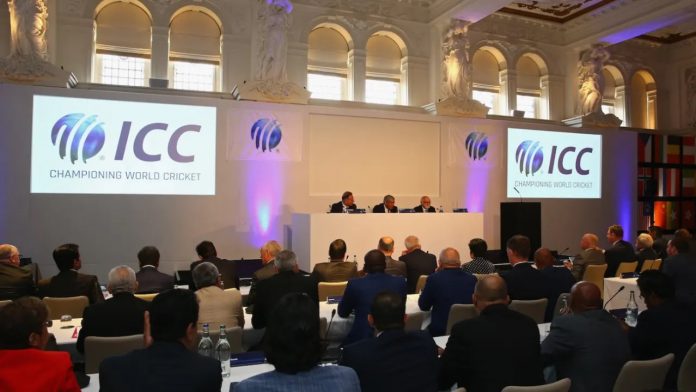Since the proposed new international revenue-distribution model significantly favors the superpowers in the game, several Associate member boards worry that it would stunt the game’s expansion. A new revenue-sharing plan for the 2024–27 cycle has been presented by the ICC and will be decided upon at its board meeting in Durban in July.
In the new financial model, BCCI would be entitled to 38.5% of annual earnings on its own, as ESPNcricinfo reported earlier this month, mostly as compensation for its contribution to the commercial revenue pot. The remaining portion would be divided among the 94 Associate members, with the 12 Full Members of the ICC taking a combined 88.81%.
Although general manager Wasim Khan stated on Monday that all members will receive more money under the proposed model than they had in the past, the ICC has not yet responded to the numbers. The PCB has already stated that it opposes the model in its current form, and discontent is growing among other, less advanced cricket-playing nations.
The plan, according to Sumod Damodar, vice-chairman of Botswana’s board and one of the three representatives from Associate members on the ICC Chief Executives’ Committee, would not satisfy the demands of Associate members.
“As an Associate member representative, I would be [disappointed] if what is being proposed and discussed is likely to be the outcome,” he told Reuters. There are many practical explanations for why it wouldn’t be sufficient for Associate members.
According to Damodar, Associate members with ODI status require more funding to maintain their high-performance programs, while the others require funding to fill the gap. Damodar asserted that more nations would participate if they were given the necessary financial backing, citing the swift development of Nepal in men’s cricket and Thailand in women’s competition.
Tim Cutler, the chief executive of the Vanuatu Cricket Association, claimed that the suggested model would merely magnify the disparity between cricket’s wealthy and poor players.
The survival of the game could be further jeopardized by the planned changes, according to Cutler, who told Reuters that “the new model is now even more heavily weighted towards the bigger cricketing nations.” If the global revenues for the game aren’t distributed more fairly with an eye on really expanding the game, the sad truth is that cricket won’t go beyond its existing corners of the globe.
Cutler compared taking money away from themselves or making autonomous judgments for the benefit of the game to “turkeys voting for Christmas” because Full Members hold 12 of the board’s total 17 votes.
When questioned about the worries of the Associate members, the ICC chose not to comment.
Over-dependence on India is dangerous, according to the former PCB chairman
Despite the enormous commercial potential of some of them, according to former ICC president Ehsan Mani, the organization’s approach to developing cricketing nations lacked vision.
According to the former PCB chairman, “one of the biggest risks for international cricket is its over-dependence on one country – India – for a major part of the revenues generated.” “Countries like the United States, the Middle East, and, in the long run, China, would bring the International Cricket Council, its members, and the global game huge benefits. It would make world cricket stronger and more prosperous.
Mani supported equal shares for all Full Members since he said it “makes no sense” for India to take the lion’s share of ICC profits.
West Indies, South Africa, Sri Lanka, Bangladesh, and Pakistan must all be strong for world cricket, he continued. “Lack of funding has negatively impacted cricket in Zimbabwe, Ireland, and Afghanistan. The game won’t be sustainable in some of these nations due to a lack of investment, and cricket worldwide will suffer as a result.




